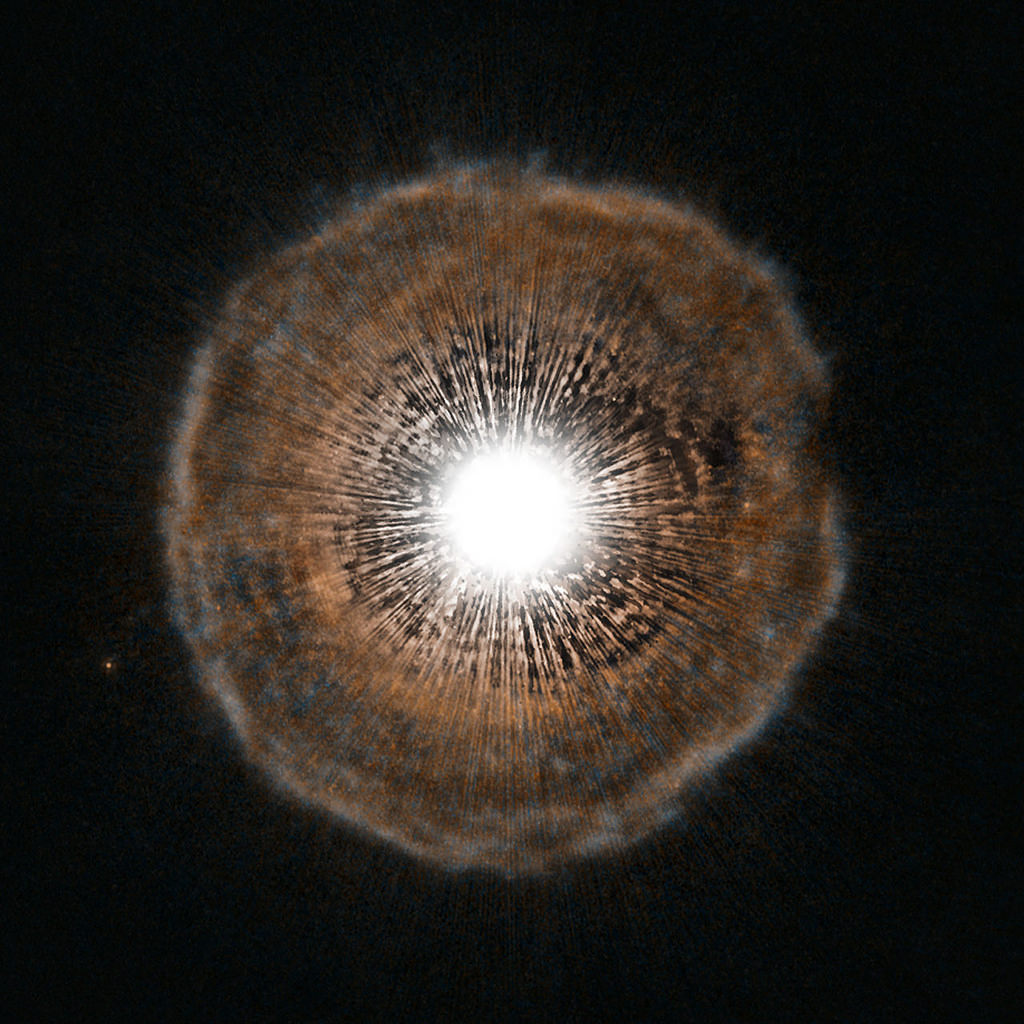As stars approach the inevitable ends of their lives they run out of stellar fuel and begin to lose a gravitational grip on their outermost layers, which can get periodically blown far out into space in enormous gouts of gas — sometimes irregularly-shaped, sometimes in a neat sphere. The latter is the case with the star above, a red giant called U Cam in the constellation Camelopardalis imaged by the Hubble Space Telescope.
 From the Hubble image description:
From the Hubble image description:
U Cam is an example of a carbon star. This is a rare type of star whose atmosphere contains more carbon than oxygen. Due to its low surface gravity, typically as much as half of the total mass of a carbon star may be lost by way of powerful stellar winds. Located in the constellation of Camelopardalis (The Giraffe), near the North Celestial Pole, U Cam itself is actually much smaller than it appears in Hubble’s picture. In fact, the star would easily fit within a single pixel at the center of the image. Its brightness, however, is enough to saturate the camera’s receptors, making the star look much bigger than it really is.
The shell of gas, which is both much larger and much fainter than its parent star, is visible in intricate detail in Hubble’s portrait. While phenomena that occur at the ends of stars’ lives are often quite irregular and unstable, the shell of gas expelled from U Cam is almost perfectly spherical.
Image credit: ESA/NASA

